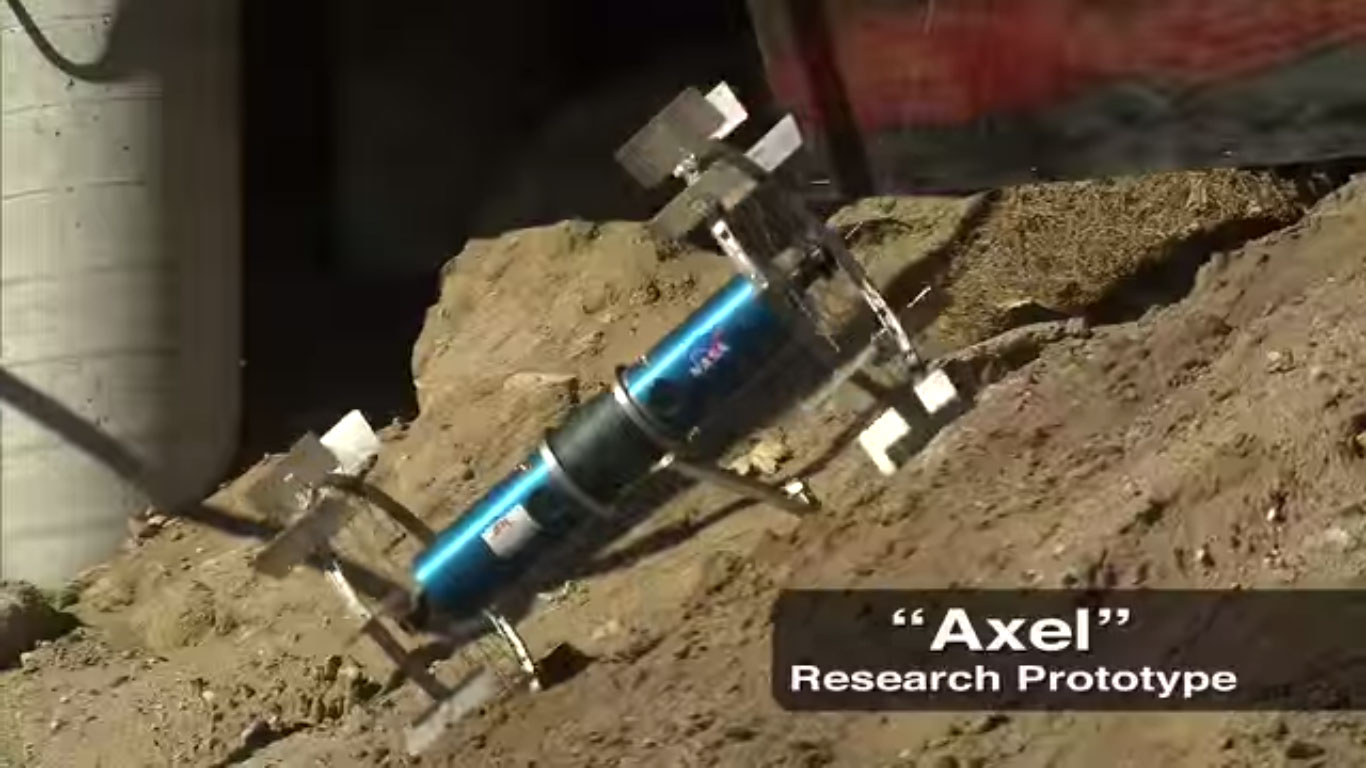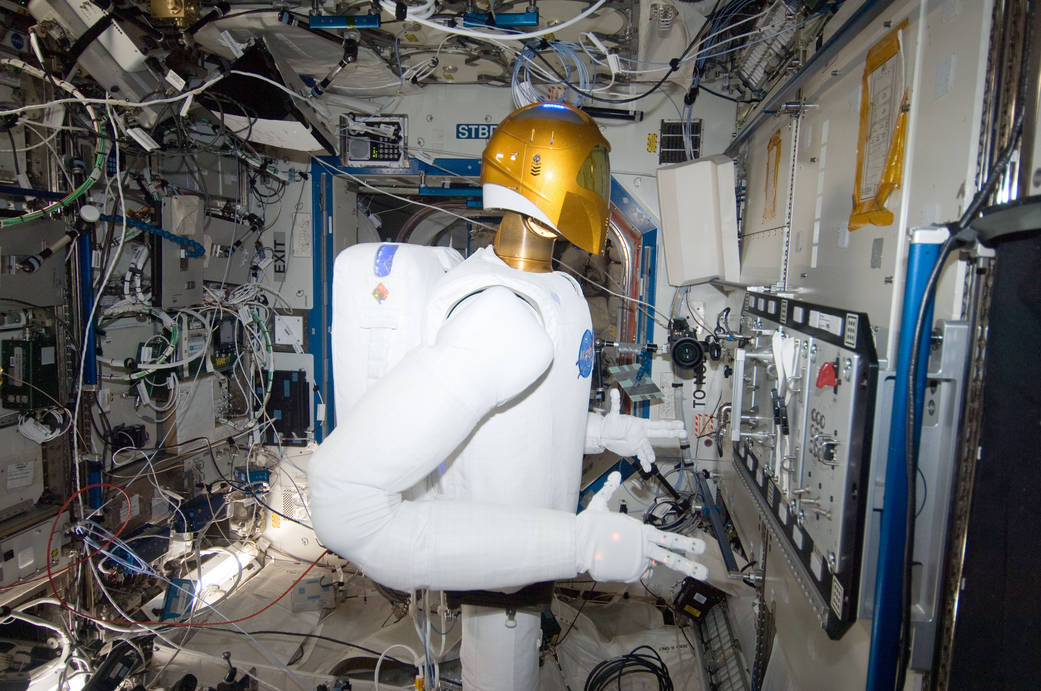WASHINGTON – In the box office hit “The Martian,” Matt Damon plays an astronaut stranded on Mars who manages to survive and even grow plants on the barren planet.
But that is nothing compared with what NASA really has in mind for Earth’s planetary neighbor.
NASA has plans for Mars to be peppered with interconnected structures resembling a trailer park. Rows and columns of housing units, laboratories, garages, and storage space, all neatly organized.
A team of automated machines would assemble these structures, a squad of autonomous humanoid robots would maintain them, and a platoon of self-driving rovers would explore the area and collect resources.
Engineers at the Johnson Space Center and the Jet Propulsion Lab have been developing scores of robotics technologies vital for a manned mission to Mars.
Some of the tech in “The Martian” – such as Mr. Damon’s rover – was based on the agencies’ work.
They confidently predict that creating a permanent human habitat on Mars can be done within two decades. They also say it can be done within the planned NASA budgets. And if the agency had a budget boost, it might happen sooner.
Meanwhile, many of the technologies that will be vital to such missions are near completion. The rest are still being tested but could be completed soon. Three of those clutch technologies are the Axel rover, the MMSEV, and the Robonaut.
Axel rover
The Axel rover is an autonomous exploration rover with a very simple design: two wheels attached to a center axle housing the computer and power source. The Axel rover is connected to a main rover unit by a tether.

JPL’s Axel rover can be used to rappel down cliff faces and crater walls to collect core samples of Martian ice sheets to discover the source of the planet’s water (JPL)
The Mars factor here is that the Axel rover will allow scientists to collect core samples from the Red Planet’s recurring slope lineae (RSL), seasonal flows with recent evidence of them being briny liquid water flows, and determine the source of the water.
According to Issa Nesnas, a supervisor for the Robotic Mobility Group at JPL in Pasadena, Calif., there has been interest in Martian cliff faces and crater walls, where the RSLs have just been located, since their discoveries in 2006. The Axel rover could explore Mars’ water pockets.
The current theory, says Mr. Nesnas, is that the water comes from aquafrost from inside the sheets, not from the atmosphere, “because the current amount of moisture in the atmosphere is inadequate to generate the scale [of ice] that people have observed from orbit.”
Nesnas and his team took the idea of detachable modules and said, “What if we put a tether on one of these axels and operate it like a yo-yo?” That is exactly how the rover operates.
The Axel rover module can detach itself from the main payload unit, rappel down a cliff face or crater wall, and return by being pulled up by a winch.
But the true significance of the Axel rover is in its wheels.
“If you carefully look at the wheels, these are empty wheels that envelop what is a large cylinder that moves independent from the wheel,” Nesnas says. “And inside that cylinder … we put multiple instruments.”
Working in coordination with Honeybee robotics in Pasadena, NASA developed drilling and coring tools to put inside the Axel’s wheels. In Earth field tests, JPL was “able to also collect samples from the rock faces or cores and cache it and bring it back to the top,” Nesnas says.
MMSEV
The Martian atmosphere is composed mostly of carbon dioxide and very little oxygen, making it impossible for astronauts to work outside of a pressurized habitat or spacesuits that take hours to prepare. That is where the multi-mission space exploration vehicle, or MMSEV, can help.
Very similar to the rover in “The Martian,” the MMSEV comes in multiple sections: a 350-cubic-foot cabin that can be attached to different types of mobility bases – with wheels, tumblers, or flight jets. Current designs do not allow one cabin to be switched between chassis, but rather have one standardized cabin replicated on multiple chassis. In addition to allowing astronauts to explore Mars without leaving the safety of the cabin, it also makes walking on the surface of the planet easier.

The multi-mission space exploration vehicle resembles the rover Matt Damon drove in “The Martian” and will make it easier for astronauts to explore the Mars surface (NASA)
“One of the enabling technologies to make it really effective was a concept we called the ‘suit-port’,” Robert Ambrose, division chief for Software, Robotics, and Simulation at JSC, says. Instead of spending several hours getting in and out of a spacesuit for a spacewalk, Mr. Ambrose and his team have shown in field tests that getting into and out of the suits can now take just 15 minutes.
“The suits are already hanging outside, they’re hooked on to the side of the cabin wall,” Ambrose says. “You climb into them, you close the rear hatch, you close the hatch on the cabin, and then you can separate.”
This means that explorers can do several smaller space walks every day instead of the current procedure of one eight-hour walk, a very important factor when it comes to exploring the Martian surface.
“On a given day, we would do three or four space walks,” Ambrose says. “The crew would drive for a while, they’d find a spot … get in the suit, go outside, collect the samples, come back in, and then drive to the next spot. It’s a great way to do exploration, and a very new way.”
Robonaut 2, 3, 4…
Robonaut, short for robotic astronaut, is an autonomous humanoid robotic system that could be used to help set up and maintain habitats on Mars even before any human sets foot on it.
“If you read the book [‘The Martian’], stuff started breaking around the poor guy left and right,” Ambrose says. According to him, that is exactly what would happen if NASA were to send supplies to Mars before humans arrive.
“Which reinforces this point that stuff will break and for it to all still be working when you get there, somebody has to be fixing it,” he says.
Given its near-human shape, proportion, and hands, Robonaut 2 can use control panels, knobs, and levers like a human astronaut would. Nearly 20 years old and already in its second iteration, Robonaut 2 became the only permanent resident of the International Space Station on Feb. 24, 2011.

Robonaut 2 is the only permanent resident of the ISS as of Feb. 24, 2011 and its capabilities are being studied by NASA engineers (NASA)
According to Ambrose, by the time NASA is ready to prepare Mars for a crewed visit, Robonaut could be at its fifth, sixth, or even seventh iteration. This, he says, will be when the Robonaut’s true potential comes out.
“That’s the right technology to be able to putter around fixing things, replacing stuff ahead of them breaking and keeping the facility going kind of like a caretaker while waiting for the humans to arrive,” he says.
Why we’re not going until the 2030s
Despite all of NASA’s technological advances, it still predicts a manned mission to Mars is another two decades away. One of the main roadblocks is most of the technology that would allow astronauts to survive is still in the prototype phase.
“There are five or six really key technologies that need to mature before we can confidently send humans to Mars and then bring them back safely,” Jim Adams, NASA’s deputy chief technologist, says.
Another key problem with Mars travel: time delay.
There is an imperceptible lag when people talk on the phone due to the time needed for electrical signals to travel from one phone to the other.
The same principle applies to communicating with robots or humans on Mars, only with a much longer delay (roughly 20 minutes to reach the Martian surface). This means controlling rovers and robots is a very slow and complicated process.
But NASA is working on it, says Ambrose: “That’s a technology that we’re really working on: making the robots able to be more capable, more independent, so that they’re not constantly saying, ‘Mother may I?’”
Unlike many new programs, money is not a major roadblock. NASA will not need a huge budget boost to get astronauts on Mars, according to Mr. Adams. According to a paper by the American Institute of Aeronautics and Astronautics, if NASA’s $18 billion budget were to rise with inflation, we would be able to send a manned mission to Mars by the 2030s.
As for exact costs of such missions, Adams called that a red herring because of yet another problem: NASA experts are still determining what the best and safest flight paths would be, which directly influence mission costs.
For him, however, that is just one more thing to check off on the to-do list.
“I don’t believe that there’s anything unsolvable about putting human beings on the surface of Mars,” he says.


